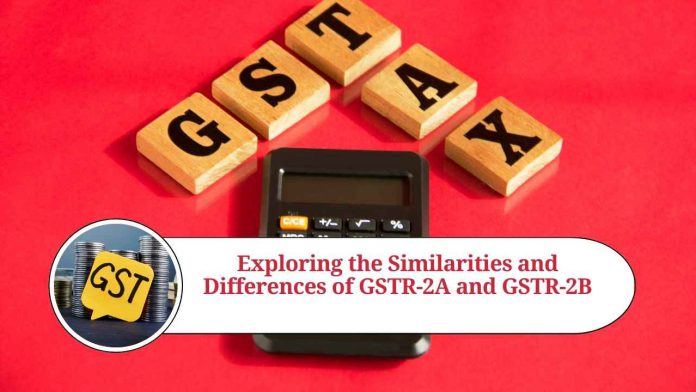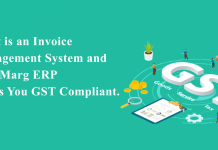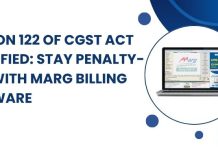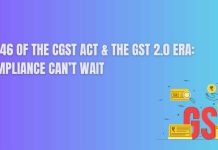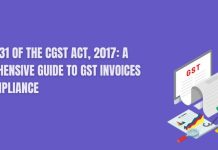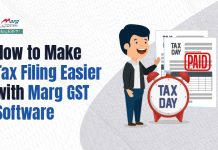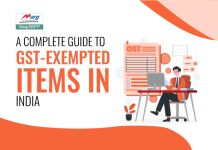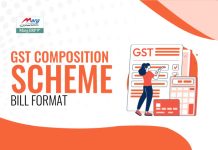GST (Goods and Services Tax) is a comprehensive tax system implemented in India to replace the complex indirect tax structure of the past. GST has been instrumental in simplifying the tax structure in the country and has made it easier for businesses to file their tax returns. However, there are different types of GST returns, and it’s essential to understand the difference between them. Two such returns are GSTR-2A and GSTR-2B.
In this blog, we’ll explain the difference between GSTR-2A and GSTR-2B, their significance, and the importance of understanding them.
What is GSTR-2A?
GSTR-2A is an auto-populated return that reflects the inward supplies received from registered suppliers. GSTR-2A is generated automatically based on the details submitted by the supplier in their GSTR-1 return. The details that are auto-populated in GSTR-2A include the following:
- Details of all invoices uploaded by the supplier
- Details of credit/debit notes uploaded by the supplier
- Amendments made by the supplier to the invoices or credit/debit notes already uploaded
The taxpayer can view and download the GSTR-2A return from the GST portal.
What is GSTR-2B?
GSTR-2B is also an auto-populated return that reflects the inward supplies received from registered suppliers. However, it’s different from GSTR-2A in a few ways. GSTR-2B is a static return that’s generated on the 14th of every month, whereas GSTR-2A is a dynamic return that’s updated continuously as the supplier uploads their GSTR-1 return.
The details that are auto-populated in GSTR-2B include the following:
- Details of all invoices uploaded by the supplier
- Details of credit/debit notes uploaded by the supplier
- Amendments made by the supplier to the invoices or credit/debit notes already uploaded
- Details of the Input Tax Credit (ITC) available
- The late fee payable or paid
The taxpayer can view and download the GSTR-2B return from the GST portal.
Difference between GSTR-2A and GSTR-2B
- Timeliness: GSTR-2A is a dynamic return that’s updated continuously, whereas GSTR-2B is a static return that’s generated on the 14th of every month.
- Purpose: GSTR-2A is primarily used to verify the ITC claimed by the recipient. GSTR-2B is more comprehensive and provides additional information such as the amount of late fee payable or paid.
- Availability: GSTR-2A can be downloaded at any time from the GST portal, whereas GSTR-2B is generated only once a month and is available for download from the 14th of the month.
- Scope: GSTR-2A provides only the information related to the inward supplies received from registered suppliers. GSTR-2B provides information on ITC, late fee payable or paid, and details of the invoices uploaded by the supplier.
Why is it essential to understand GSTR-2A and GSTR-2B?
It’s essential to understand GSTR-2A and GSTR-2B as they play a crucial role in the GST return filing process. GSTR-2A helps in verifying the ITC claimed by the recipient, while GSTR-2B provides additional information that can be used to reconcile the accounts and ensure that the return is filed accurately. Proper understanding of these returns can help businesses avoid penalties for non-compliance and ensure a smooth GST return filing process.
GSTR-2B, on the other hand, is a static return that’s generated on the 14th of every month. It provides a comprehensive overview of the inward supplies received from registered suppliers, including details of the invoices uploaded by the supplier, credit/debit notes, amendments, and the amount of ITC available. GSTR-2B also provides information on the late fee payable or paid, making it easier for businesses to reconcile their accounts and ensure accurate GST return filing.
In addition to the differences highlighted above, there are a few other key points that businesses need to be aware of when it comes to GSTR-2A and GSTR-2B:
- While GSTR-2A is an auto-populated return, the recipient can make modifications to the details before filing their GST return.
- GSTR-2B is not a substitute for GSTR-2A. Businesses must verify the details in GSTR-2A before filing their GST return, even if they have already downloaded GSTR-2B.
- The availability of GSTR-2B is limited to a specific timeframe (from the 14th of the month to the end of the month). Businesses must ensure that they download the return during this time to avoid missing out on important information.
Conclusion
In conclusion, understanding the differences between GSTR-2A and GSTR-2B is crucial for businesses to ensure accurate GST return filing. While GSTR-2A helps in verifying the ITC claimed by the recipient, GSTR-2B provides a comprehensive overview of the inward supplies received from registered suppliers and other important details. By staying up to date with these returns and reconciling their accounts regularly, businesses can avoid penalties for non-compliance and ensure a smooth GST return filing process.
Read more useful content:
Frequently Asked Questions (FAQs)
- What is GST and how does it work?
- GST is a tax on the consumption of goods and services in India. It is a destination-based tax, meaning the tax revenue is collected by the state where the goods or services are consumed. It is levied at every stage of the supply chain, with credit for tax paid at previous stages.
- What is the GST registration process for businesses in India?
- The GST registration process involves submitting an online application with the GST department and providing information about the business, its owners, and its operations. Once the application is verified and approved, a unique GST identification number (GSTIN) is assigned to the business.
- What is GSTR-1 and how often does it need to be filed?
- GSTR-1 is a return that contains details of all outward supplies made by a registered dealer in a given period. It needs to be filed monthly for businesses with a turnover of more than Rs. 1.5 crore and quarterly for businesses with a turnover of up to Rs. 1.5 crore.
- What is an e-way bill and when is it required?
- An e-way bill is a document required for the movement of goods worth more than Rs. 50,000 within India. It needs to be generated online by the supplier or recipient of the goods and contains details such as the name of the consignor, consignee, and transporter.
- What is input tax credit (ITC) and how can it be claimed?
- ITC is the credit that a business can claim for the GST paid on inputs used in the production or supply of goods or services. It can be claimed by filing GSTR-3B and GSTR-2A returns, and by ensuring that the details in these returns match with the details in the invoices.
- What is a GST audit and who is required to undergo it?
- A GST audit is an examination of the financial records of a business to ensure compliance with GST laws. It is mandatory for businesses with a turnover of more than Rs. 5 crore in a financial year, and can also be conducted by the GST department if there is suspicion of non-compliance.
- What is the GST composition scheme and who is eligible for it?
- The GST composition scheme is a simplified tax scheme for small businesses with a turnover of up to Rs. 1.5 crore. Under this scheme, businesses can pay a fixed percentage of their turnover as GST, instead of the normal GST rates, and are also not required to maintain detailed records.
- What is the penalty for late filing of GST returns?
- The penalty for late filing of GSTR-1 is Rs. 200 per day of delay (up to a maximum of Rs. 10,000), and for late filing of GSTR-3B is Rs. 50 per day of delay (Rs. 20 per day for nil returns).
- What is the GST rate for different goods and services?
- The GST rate varies depending on the type of goods or services. There are four tax slabs: 5%, 12%, 18%, and 28%, with some goods and services being exempt or taxed at a nil rate.
- What is the role of GSTN in the GST system?
- GSTN (Goods and Services Tax Network) is a non-profit organization that manages the IT infrastructure of the GST system, including the GST portal, e-way bill portal, and other applications. It provides a common platform for businesses to interact with the GST department and file their returns online.

